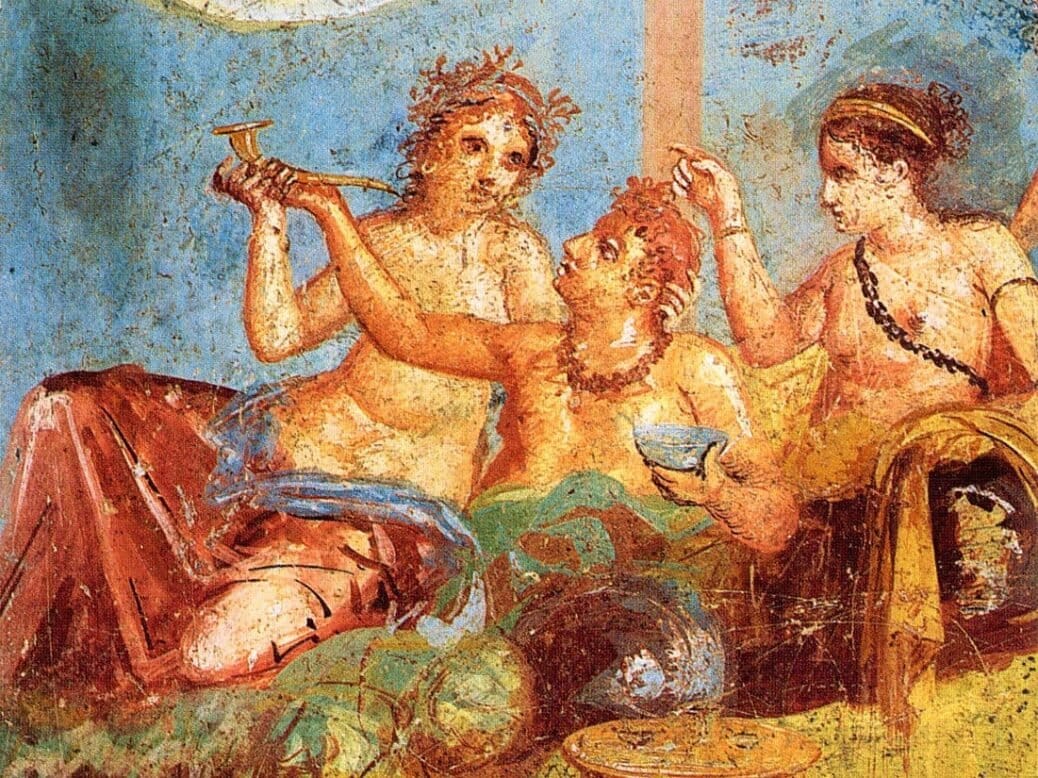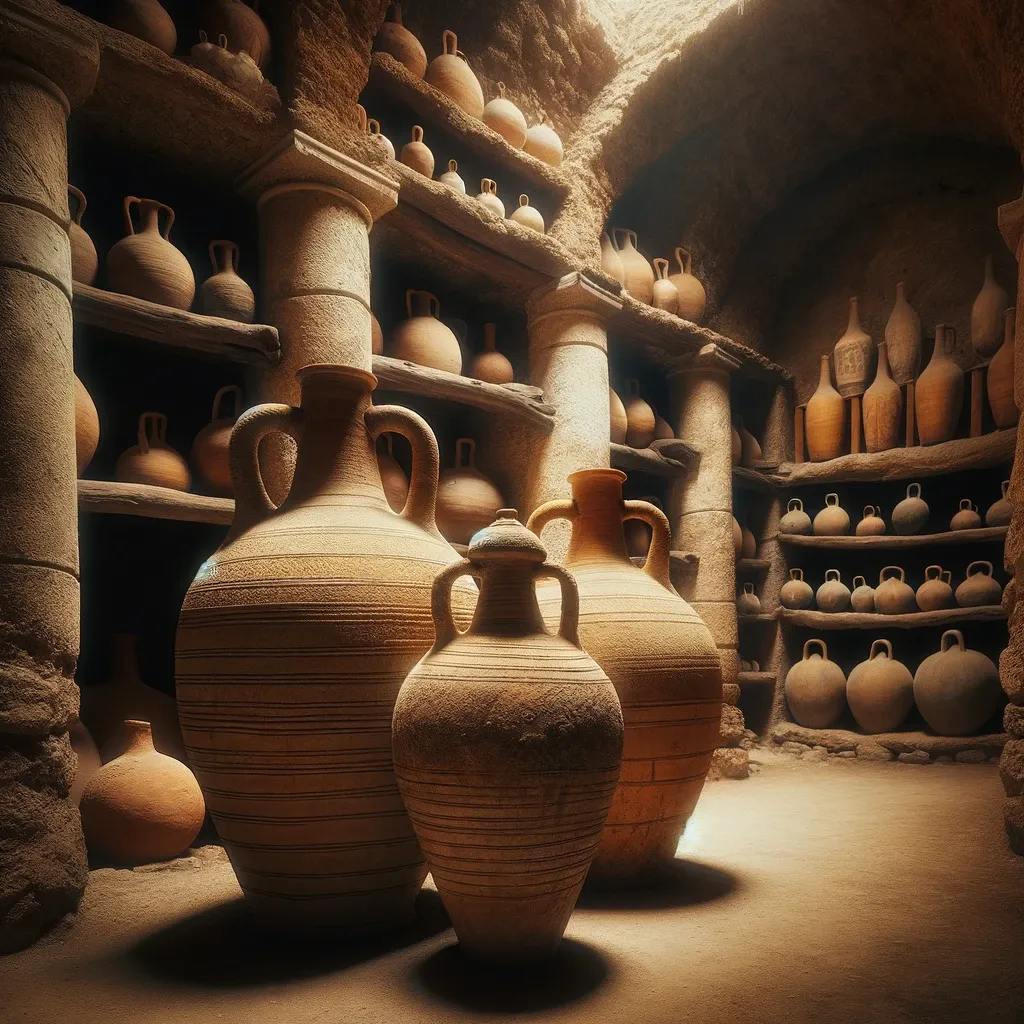Falernian wine: Roman Empire's favorite
Falernian wine was one of the most renowned wines of the Roman Empire, coming from the hills of Campania in southern Italy.

In the archives of oenology, few wines hold as storied a place as Falernian wine, the legendary beverage that flowed through the veins of the Roman Empire. Esteemed by poets, statesmen, and emperors alike, Falernian was more than a wine; it was a symbol of Roman opulence and refinement.
The Origins of Falernian Wine
Falernian wine, or "Falernum" in Latin, traces its roots to the hills of Campania in southern Italy, where the fertile volcanic soils of the region provided an ideal terroir for viticulture. It was produced from vines planted on the middle slopes of Mount Massico. The wine's name is derived from the Agro Falerno area, a region celebrated by ancient writers for producing this exquisite wine.
Cultivated in the vicinity of what is now Naples, Falernian wine, a white variety, was matured for extensive periods, occasionally spanning several decades, in sizable clay amphorae. It underwent oxidation until it attained an amber hue. Historical accounts mention a 160-year-old Falernian being presented in crystal goblets to the Roman Emperor.
According to legend, Falernus, a modest Roman farmer working his land on Mount Massico, received a visit from Bacchus, the deity of wine and farming, without realizing his divine identity. Falernus offered Bacchus a modest meal and displayed generous hospitality. In response, Bacchus magically filled the cups on the table with wine. When Falernus woke up the following day, feeling groggy and with a hangover, he found Bacchus had departed, but in his wake, he had transformed the mountain, leaving it blanketed with lush grapevines.
Falernian wine was recognized for its notably high alcohol content, with Pliny the Elder remarking that it was the sole wine capable of igniting when exposed to a flame. This wine was picked exceptionally late in the harvest season, resulting in a sweetness akin to contemporary dessert or ice wines, and it was traditionally aged in clay amphorae for about fifteen to twenty years.
This wine was so coveted, famous, and costly that at least one Roman inscribed on his tombstone his pride in consuming it: "Here I rest, once known as Primus. My days were filled with Lucrine oysters and frequent sips of Falernian wines. Over the years, the joys of bathing, wine, and love were my indulgence."
Within the excavated remains of Pompeii, a sort of price list was uncovered on the wall of a tavern: (as was a unit of currency; a loaf of bread costed two assēs)
“For one as you can drink wine; for two, you can drink the best; for four, you can drink Falernian.”
The Wine of Emperors and Poets
Falernian wine held a prestigious place in Roman society, often associated with luxury and the elite. It was the preferred choice at lavish banquets and a staple in the cellars of the wealthy. The wine was famously praised by poets such as Horace and Martial, who lauded its quality and potency. Pliny the Elder, in his Naturalis Historia, recounts the tale of the Opimian Falernian from 121 BC, a vintage so renowned that it was celebrated for centuries.
Horace and Catullus referenced Falernian wine in their poems, and Petronius included it in his work 'Satyricon'. Esteemed by gods, emperors, and the affluent of Ancient Rome, Falernian wine was so highly sought after that by AD 180, the physician and epicure Galen expressed scepticism over the authenticity of all wine sold under its name, indicating that wine fraud was already prevalent in Ancient Rome. Additionally, Falernian wine stands out as one of the initial wines to be exported from Europe to Britain during its Roman rule.
Characteristics and Production
Falernian wine was known for its high alcohol content, with estimates suggesting it could reach up to 15% ABV, a remarkable feat for ancient winemaking. The wine was produced in three varieties: dry (austerum), sweet (dulce), and light (tenue), catering to different palates and occasions. The production of Falernian involved letting the grapes overripe on the vine, a technique that concentrated the sugars and flavors, leading to a richer and more potent wine.
The wine was aged in large clay amphorae, sealed with pine resin, which contributed to its distinctive taste. Ageing was a crucial aspect of Falernian wine, with some vintages reportedly being stored for decades before consumption. The ageing process not only enhanced the wine's complexity but also its value, with older vintages fetching higher prices in the markets of Rome.

Pliny the Elder described Falernian wine in three varieties: the rough, the sweet, and the thin, while other accounts highlight the late-harvest white wine as particularly favored. Known as one of Rome's premier and most beloved wines, Falernian enjoyed at least 500 years of fame, cherished by senators, emperors, generals, and statesmen alike.
“There is now no wine known that ranks higher than the Falernian; it is the only one, too, among all the wines that takes fire on the application of flame. There are three varieties of it—the rough, the sweet, and the thin.” Pliny the Elder
However, not everyone was a fan of Falernian wine. Marcus Aurelius, the Stoic philosopher who ruled as Emperor of Rome from 161 to 180 AD, was less impressed. In his "Meditations," he remarked, “For after all, Falernian wine is just juice from a bunch of grapes.”

Falernian in Historical Context
Falernian wine's reputation extended beyond the borders of the Roman Empire, becoming a symbol of Roman cultural and gastronomic supremacy. It was often used as a diplomatic gift, and tales of its consumption by historical figures such as Julius Caesar and Caligula added to its mystique. However, the decline of the Roman Empire saw a gradual disappearance of Falernian wine, as the vineyards of Campania were neglected and fell into ruin.
The Modern Comeback of Falernian Wine
In recent years, there has been a resurgence of interest in Falernian wine, driven by historians, oenophiles, and winemakers eager to recreate the legendary beverage. Modern attempts to produce wine inspired by ancient Falernian involve meticulous research into Roman winemaking techniques and the exploration of the original terroir in Campania. While the exact taste and character of ancient Falernian may never be fully replicated, these efforts have led to the creation of wines that pay homage to Rome's most celebrated drink.
A Taste of History
Falernian wine embodies the essence of ancient Rome, a testament to the sophistication and complexity of Roman civilization. Its story, from the vineyards of Campania to the tables of emperors, captures the imagination of those who seek to connect with the past. As we explore the modern incarnations of Falernian, we are reminded of the enduring legacy of Roman culture and the timeless allure of a truly legendary wine.









About the Roman Empire Times
See all the latest news for the Roman Empire, ancient Roman historical facts, anecdotes from Roman Times and stories from the Empire at romanempiretimes.com. Contact our newsroom to report an update or send your story, photos and videos. Follow RET on Google News, Flipboard and subscribe here to our daily email.
Follow the Roman Empire Times on social media: